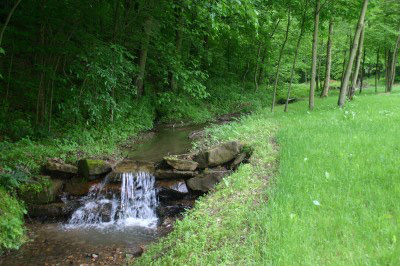Study: Wastewater disposal may increase endocrine disrupting activity, harm West Virginia waterways
Monday, April 11, 2016

COLUMBIA, Mo. – Unconventional oil and gas (UOG) operations combine directional drilling and hydraulic fracturing, or “fracking,” to release natural gas and oil from underground rock.
Endocrine disrupting chemicals
Recent studies have centered on potential water pollution from this process that may increase endocrine disrupting chemicals (EDCs) in surface and ground water and whether populations living near these operations have an increased risk of disease. Now, researchers from the University of Missouri (MU) report high levels of EDC activity in the surface water near a hydraulic fracturing wastewater disposal facility in West Virginia. Scientists warn that this level of activity may be associated with negative health effects in aquatic organisms, other animals and humans.
“Surface water samples collected on the disposal facility site and immediately downstream exhibited considerably greater EDC activity than surface water samples collected immediately upstream and in a nearby reference stream” said Susan C. Nagel, director of the study and an associate professor in the Department of Obstetrics, Gynecology and Women’s Health in the School of Medicine, and an adjunct associate professor of biological sciences in the MU College of Arts and Science. “The level of EDC activity was within the range or higher than the level known to impact the health of aquatic organisms.”
Dozens of chemicals may be used in fracturing at one site and approximately 1,000 different chemicals are reportedly used across the industry; more than 100 of these chemicals are known as or suspected to be EDCs. Large volumes of wastewater are produced in the process of fracking. Fracking wastewater is laden with chemicals used to drill and frack the well and may also contain radioactive compounds and heavy metals released from deep underground.
Disposal wells
Disposal wells, like the one in the current study, are used only to dispose of fluids associated with oil and natural gas production, according to the U.S. Environmental Protection Agency.
“Approximately 36,000 of these disposal wells are currently in operation across the U.S., and little work has been done to evaluate their potential impacts on nearby surface water,” said Christopher Kassotis, a former graduate student in Nagel’s laboratory and a current postdoctoral fellow at Duke University. “Given the large number of disposal wells in the U.S., it is critical for further investigation into the potential human and environmental health impacts.”
“Endocrine Disrupting Activity in Surface Water Associated with a West Virginia Oil and Gas Industry Wastewater Injection Disposal Site” will be published online in Science of the Total Environment. Research was part of a larger collaboration with Denise Akob, a geomicrobiologist at the U.S. Geological Survey who also directed the study.




